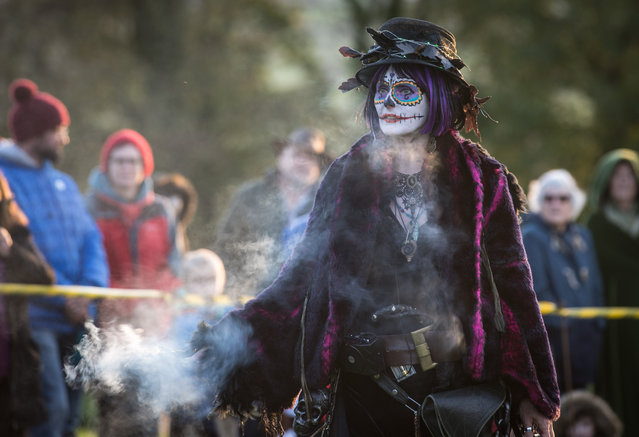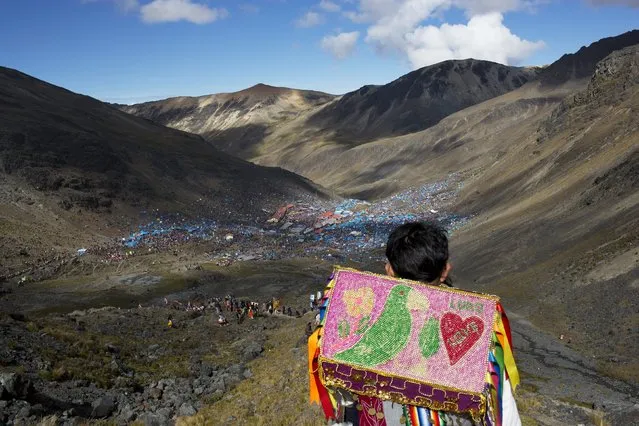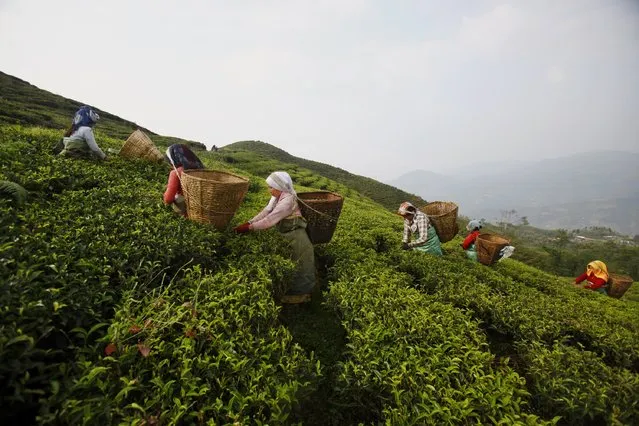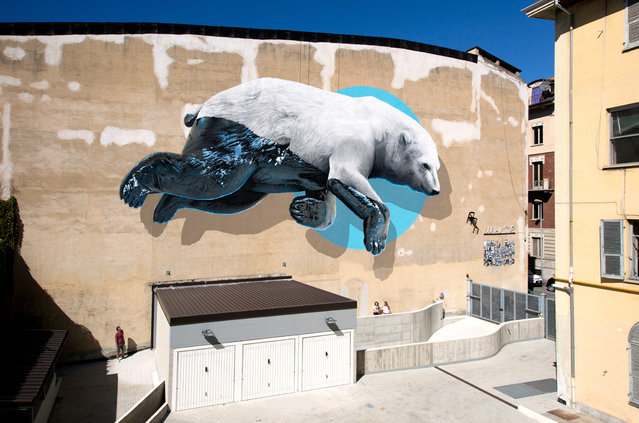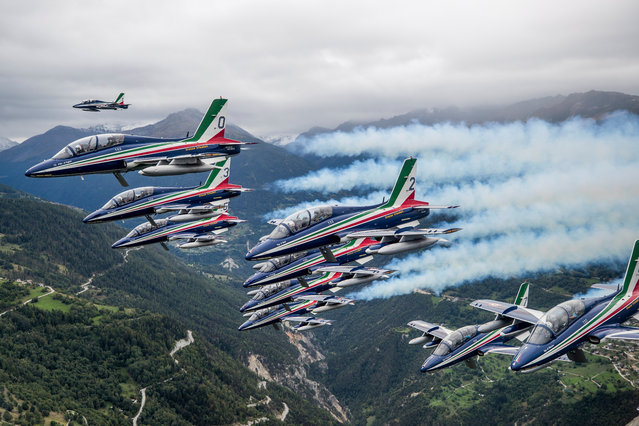
The Breitling DC-3, HB-IRJ, plane fly escorted by Italian Air Force's aerobatic demonstration team, the Frecce Tricolori, during the last stage of its world tour two days ahead of the International Sion Air Show, in Sion, Switzerland, 13 September 2017. From March to September 2017, the Breitling DC-3 from 1940 has done a grand world tour in several stages, over 28 countries and flies 50000km, an amazing accomplishment for this legendary plane that will be celebrating its 77th birthday. (Photo by Christian Merz/EPA/EFE)
14 Sep 2017 08:25:00,post received
0 comments

